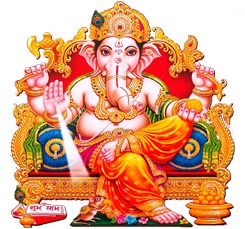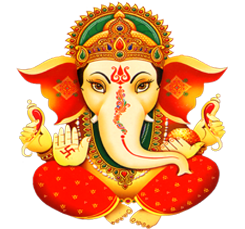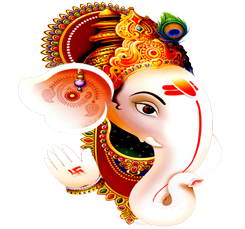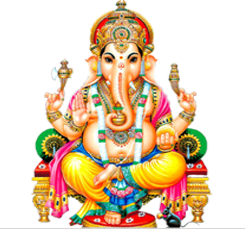❧ വാർത്തകൾ 2024 ❧
❧Sree Maha Ganapathi ❧

At Thazhuthala, Sree Mahaganapathi is seated under the huge banyan tree in a small golden
coloured temple facing the busy Kottiyam-Kundara road. Sree Maha Ganapathi, the glory of
the province resides easefully in this small temple as if sitting in his little mushika
vahanam and taking care of the whole village. Sree Maha Ganapathi is the ever-blissful,
elephant-headed deva (god) who is lovingly worshipped and revered by millions of people
worldwide. Although Ganesh is known through the Hindu religion, Sree Ganesh transcends
religion and is loved by many non-Hindus. Ganapati is worshipped by both Vaishnavas
(devotees of Vishnu) and Saivites (devotees of Shiva). Sree Maha Ganapathi is the
transcendent, all-embracing, auspicious Lord of the Ganas, is the son of Lord Shiva and
Parvati. Sree Ganesh, is the God of good luck and auspiciousness and is the dispeller of
problems and obstacles. He is also worshipped as the God of wisdom, wealth, health,
celibacy, fertility and happiness. In the panchayatana puja, Ganesh is glorified as one of
the five prime Hindu deities (Brahma, Vishnu, Shiva, Shakti and Ganesha) whose worship
confers immortality and liberation.
What Ganesh Stands For?.

Ganesha has four arms which symbolize his status as the universal ruler and establish his power over the four categories of beings - those who can live only in water, those who can live in water and on earth, those who can live only on earth and those who can fly in air. Significance of four : It was god Ganesha who instituted the four castes and the four Vedas. One hymn in Sri Bhagavat Tattva , says: 'In heaven, this child will establish the predominance over gods, on earth over men, in the nether world over anti-gods and serpents. He causes the four principles of the elements to move and is therefore four armed. In one hand, he holds a shell, in another a discus, in the third a club or a sweet and in the fourth a lotus.' Thus, all aspects of Ganesh's form are filled with symbolic meanings.

The Vehicle of Ganesh
The mouse is the vehicle of Vinayaka. What is the inner significance of the mouse? The
mouse has a keen sense of smell. The mouse is a symbol of the attachment to worldly
tendencies (vaasanas). It is well known that if you want to catch a mouse, you place a
strong-smelling edible inside the mouse-trap. The mouse also symbolizes the darkness of
night. The mouse can see well in the dark. As Vinayaka's vehicle the mouse signifies an
object that leads man from darkness to light. The Vinayaka-principle, thus, means that
which removes all the bad qualities, practices and thoughts in men and inculcates good
qualities, good conduct and good thoughts."
How did lord get his vahana?
Lord Ganesha was known to be a mischievous kid. He would often run and play all over mount
Kailash. Contrary to him, Lord Karthikeya was very quiet. He would sit on his vahana – the
peacock and deliver his father’s messages to other gods and goddesses. Seeing this Lord
Ganesha also urged his mother to get him a vahana. Goddess Paravati refused, stating that
he was too young to handle a vahana. Listening to this, Lord Ganesha started crying loudly.
His sobs shattered Lord Shiva’s meditation. That’s when Lord Shiva told his son, “I have a
perfect vahana for you.” In the past days Lord Shiva’s meditation got disturbed due to a
naughty squeaky mouse. Lord Shiva called the mouse and the tiny creature had to obey Lord
Shiva’s orders. He dropped him into his son’s hands. “From now on, this mouse will be your
vahana” said Lord Shiva.
From that day onwards Lord Ganesha developed a strong bond of friendship with his
mouse and would chase him around the house the entire day.
The relation of Lord Ganesha and his mooshika also teaches us another lesson. When god does
not discriminate between big and small, then who are we to be judgmental? God sees us as
equals and so should we.

Story behind the elephant head
One day Goddess Parvati was at home on Mt.Kailash preparing for a bath. As she didn’t want
to be disturbed, she told Nandi, her husband Shiva’s Bull, to guard the door and let no one
pass. Nandi faithfully took his post, intending to carry out Parvati’s wishes. But, when
Shiva came home and naturally wanted to come inside, Nandi had to let him pass, being loyal
first to Shiva. Parvati was angry at this slight, but even more than this, at the fact that
she had no one as loyal to Herself as Nandi was to Shiva. So, taking the turmeric paste
(for bathing) from her body and breathing life into it, she created Ganesha, declaring him
to be her own loyal son.
The next time Parvati wished to bathe, she posted Ganesha on guard duty at the door.
In due course, Shiva came home, only to find this strange boy telling him he couldn’t enter
his own house! Furious, Shiva ordered his army to destroy the boy, but they all failed.
This surprised Shiva. Seeing that this was no ordinary boy, the usually peaceful
Shiva decided he would have to fight him, and in his divine fury severed Ganesha’s head,
killing him instantly. When Parvati learned of this, she was so enraged and insulted that
she decided to destroy the entire Creation. Lord Brahma, being the Creator, naturally had
his issues with this, and pleaded that she reconsider her drastic plan. She said she would,
but only if two conditions were met: one, that Ganesha be brought back to life, and two,
that he be forever worshipped before all the other gods.
Shiva, having cooled down by this time, agreed to Parvati’s conditions. He sent
Brahma out with orders to bring back the head of the first creature he crosses that is
lying with its head facing North. Brahma soon returned with the head of a strong and
powerful elephant, which Shiva placed onto Ganesha’s body. Breathing new life into him, he
declared Ganesha to be his own son as well, and gave him the status of being foremost among
the gods, and leader of all the ganas (classes of beings), Ganapati.

